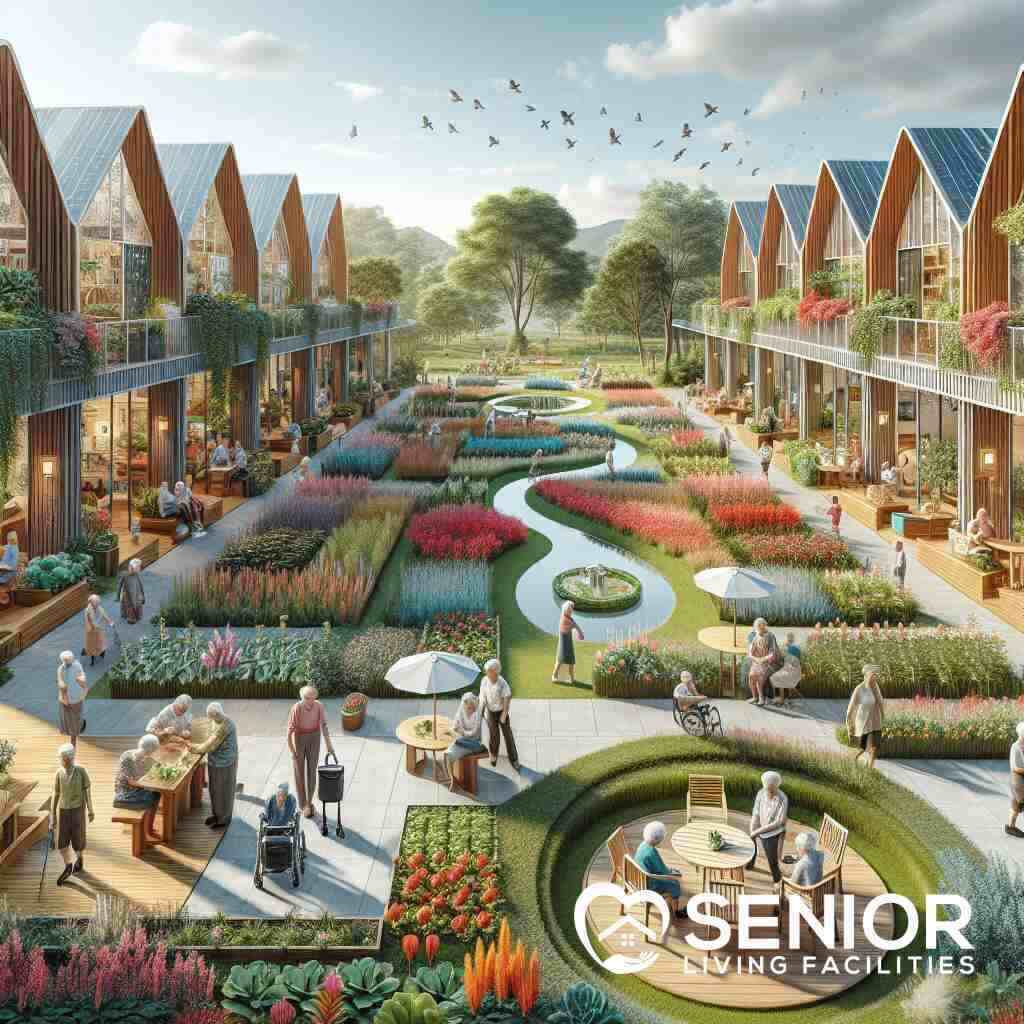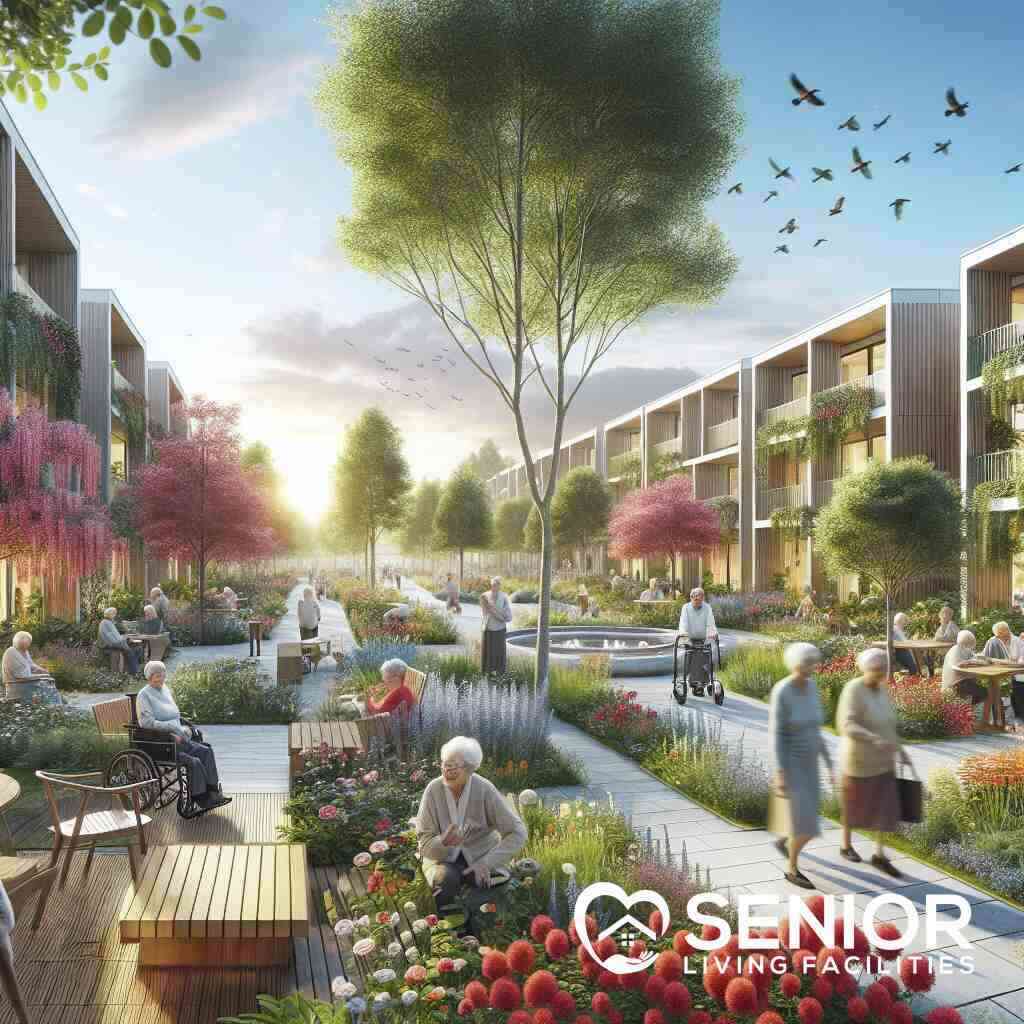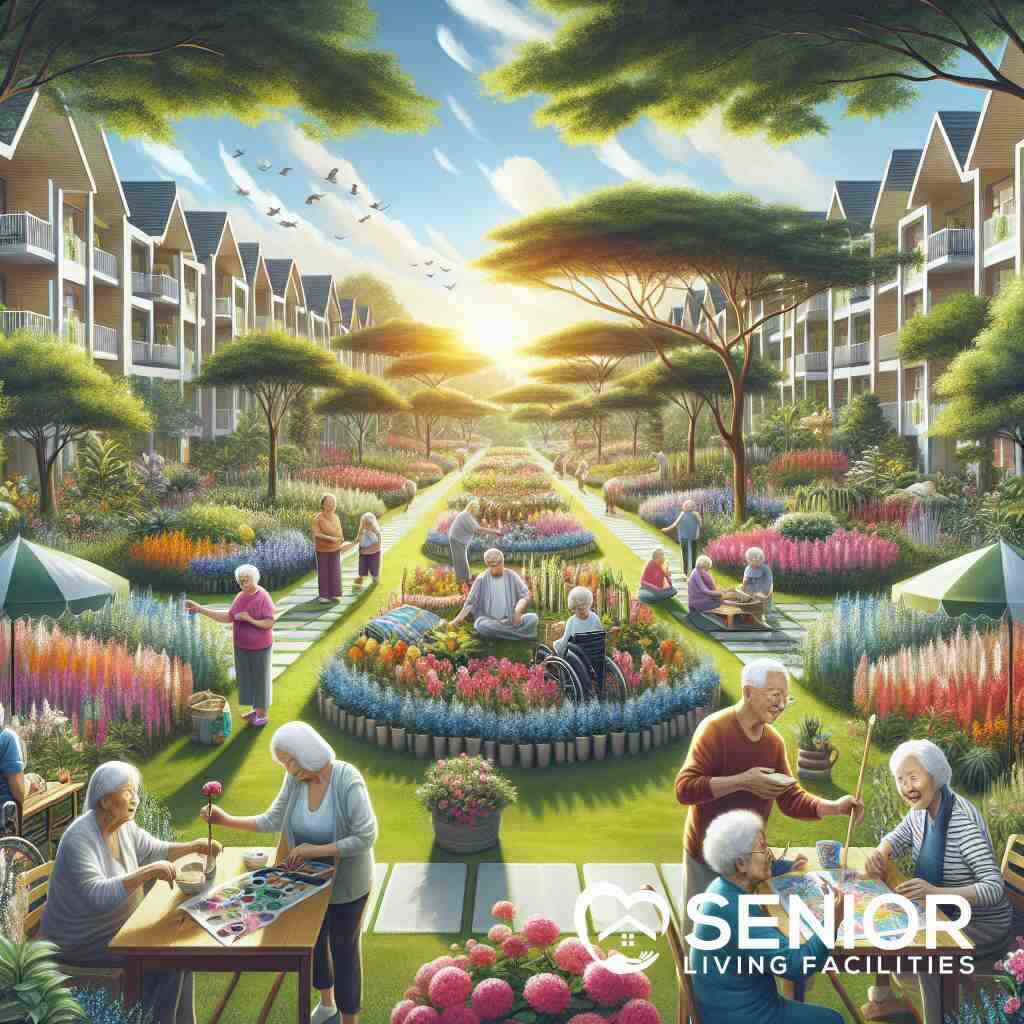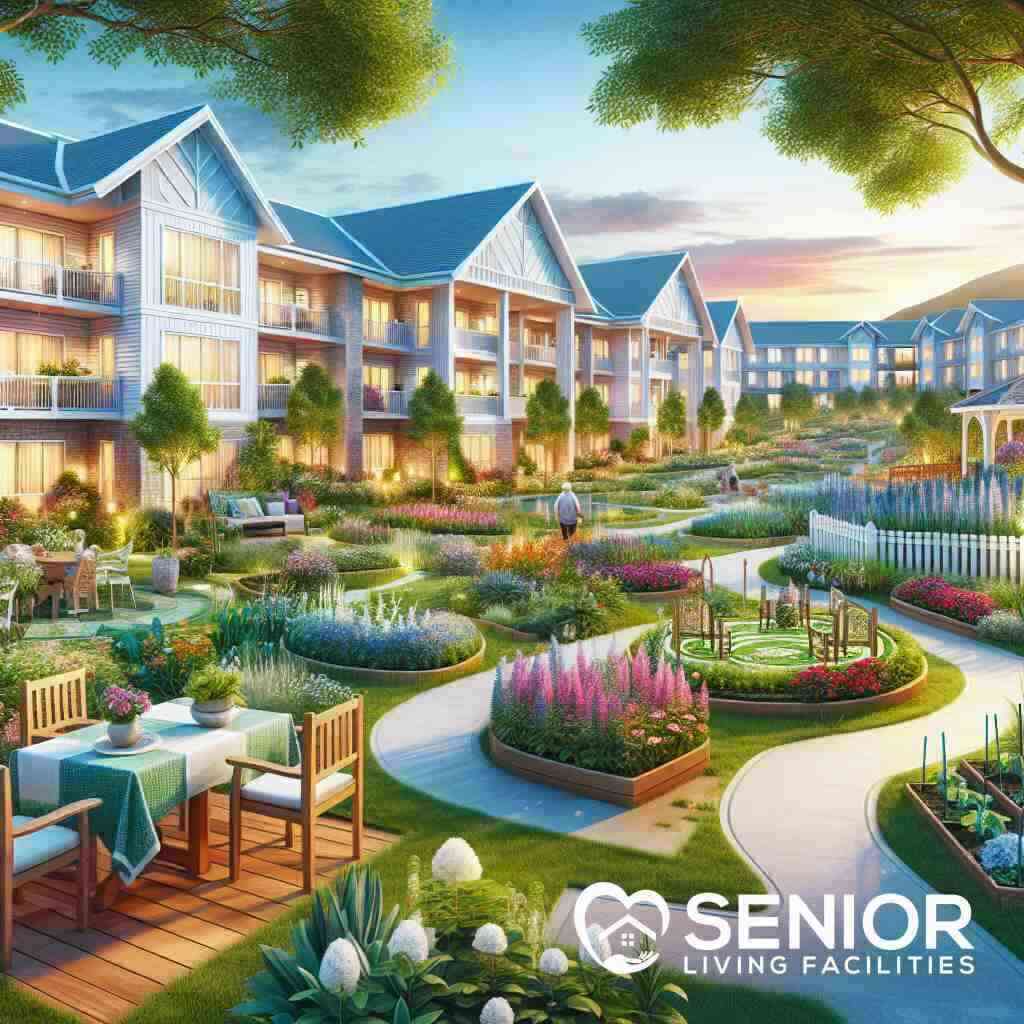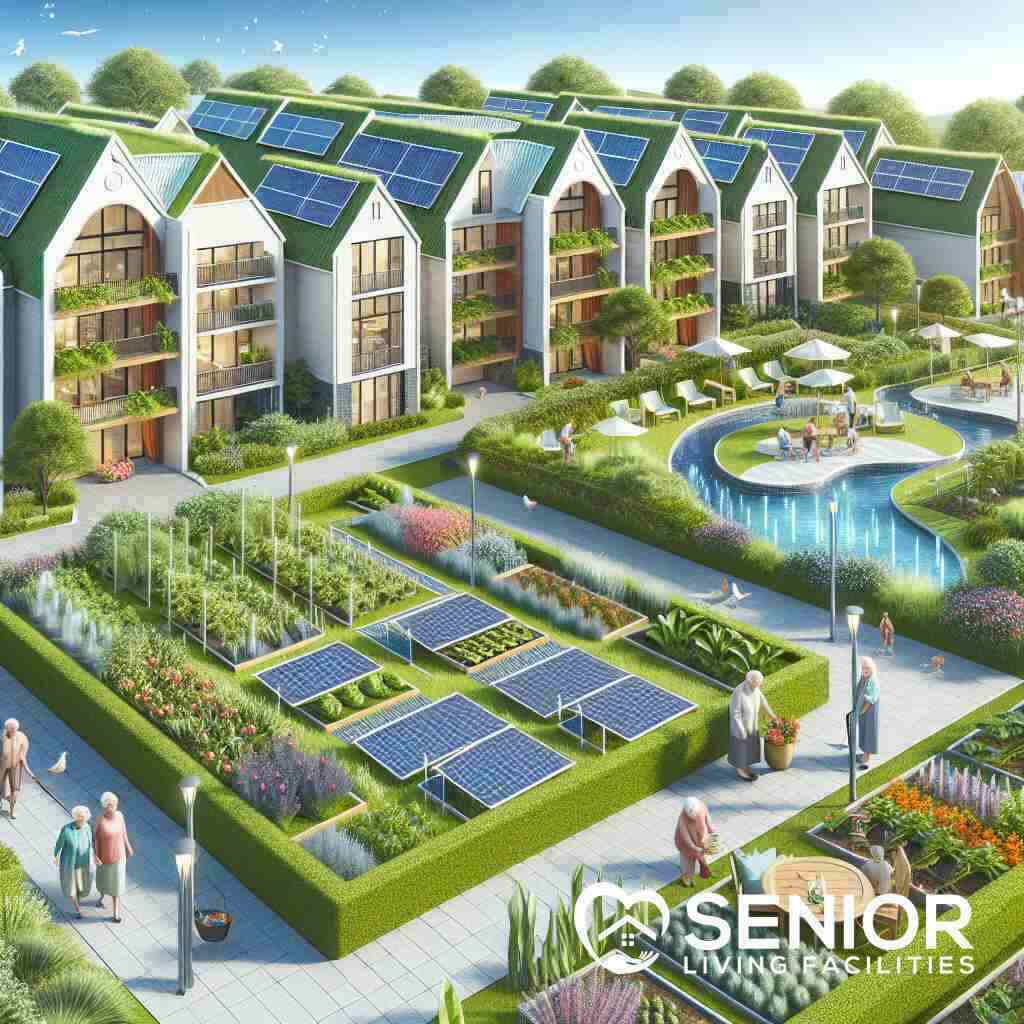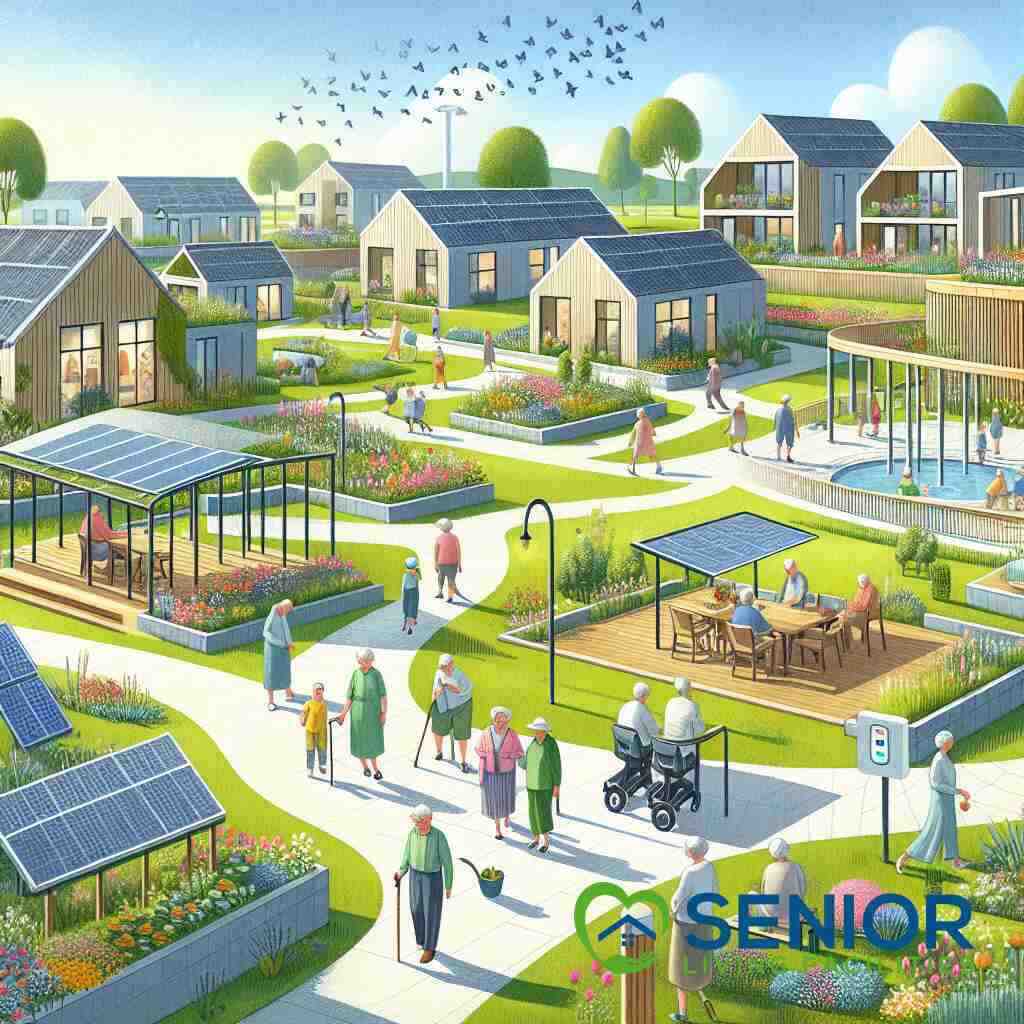
What Are Must-Know Insights on Senior Living Today?
April 19, 2025
Unveiling the Future of Senior Living
Empowering Independence through Personalized Care
In today’s evolving senior care landscape, personalized care plans for seniors are at the forefront. As seniors seek to retain their independence, tailoring care to individuals’ specific needs and preferences demonstrates a profound respect for their autonomy. Communities offering senior living facilities increasingly emphasize empowering residents by providing a balance between assistance and self-sufficiency. These specialized care strategies encompass everything from personalized health plans to bespoke daily routines, ensuring that seniors live with dignity and purpose.
Personalized care is more than just healthcare; it incorporates elements such as emotional wellness, social engagement, and lifestyle preferences. This holistic approach allows seniors to enjoy a lifestyle that is both independent and supported, fostering a sense of belonging in their communities. The objective is to promote not just longevity, but a quality of life that seniors find fulfilling and enriching.
The Evolution of Retirement Housing: Trends and Transformations
The landscape of retirement housing is witnessing substantial shifts, marked by an increased focus on adaptability and lifestyle-oriented environments. Understanding the evolution of retirement housing in Alabama reveals broad trends that span geography and demographics, reflecting seniors’ changing expectations. Today’s seniors are looking beyond mere accommodation; they desire communities that offer vibrant, engaging living experiences.
Trends such as luxury apartment living for retirees and age-restricted communities are becoming more prevalent, reshaping the options available to seniors. New housing solutions aim to offer residents not only comfort and safety but also opportunities for social connection and active engagement. The shift towards these innovative housing models reflects a broader transformation in how society views and structures senior living experiences.
Innovations in Technology Shaping Senior Living
Technology is revolutionizing the way seniors experience community life, offering enhanced safety, connectivity, and convenience. The role of technology in senior care extends beyond mere gadgets; it involves integrating advanced systems that support health monitoring, emergency response, and digital social interaction. As a result, seniors enjoy more reliable and efficient care delivery, fostering greater independence and peace of mind.
From wearable tech that monitors vital signs to sophisticated communication platforms that connect residents with loved ones, technology bridges the gap between capability and care. These innovations empower seniors to maintain a high quality of life while seamlessly receiving necessary assistance. As the industry advances, the adoption of technology will continue to streamline senior living operations, ensuring communities remain responsive to residents’ ever-evolving needs.
Reimagining Community Engagement
Fostering Intergenerational Connections
In modern senior living environments, fostering intergenerational connections has emerged as a pivotal aspect of enhancing residents’ quality of life. By bringing together different generations, communities foster a sense of belonging and vibrancy. These interactions can take many forms, from structured activities like storytelling sessions to informal gatherings. Such initiatives not only enrich seniors’ lives but also imbue younger participants with a sense of history and wisdom. Intergenerational programs are becoming increasingly popular, driving a shift towards more inclusive and community-driven care for seniors. Emphasizing intergenerational living advantages within senior communities promotes social integration, breaking down stereotypes and fostering mutual respect across age groups.
Senior living facilities are crafting environments where seniors can actively engage with children and young adults, creating a vibrant tapestry of shared experience. This interaction allows seniors to impart invaluable life lessons while simultaneously becoming recipients of youthful energy and modern perspectives. As a result, both the young and the elderly reap emotional and cognitive rewards, leading to a dynamic and supportive community life. By facilitating these connections, senior communities are reinforcing their commitment to holistic resident engagement, enhancing overall well-being.
Lifelong Learning Opportunities for Seniors
Offering lifelong learning opportunities enriches the senior living experience, ensuring that residents remain mentally active and engaged. Senior communities have recognized the profound benefits of educational programs, from stimulating cognitive functions to broadening social connections. These initiatives are designed to cater to various interests, ranging from arts and culture to science and technology. Providing seniors with avenues to explore new subjects fosters personal growth, satisfaction, and a profound sense of purpose.
Through partnerships with local educational institutions and online platforms, seniors can access a wealth of knowledge and activities. Courses and workshops tailored to seniors’ interests allow them to continue pursuing passions or discover new ones. This educational approach not only enhances intellectual engagement but also supports a vibrant community life. By valuing continuous education, senior communities underscore their dedication to creating an enriching environment throughout life’s stages.
Holistic Approaches to Senior Wellness Programs
Holistic approaches in senior wellness programs view health as a multifaceted pursuit, encapsulating physical, emotional, and spiritual well-being. Enhancing these wellness programs through innovative strategies is key to meeting the diverse needs of senior residents. Incorporating elements such as yoga, meditation, nutrition workshops, and art therapy, these programs create comprehensive care plans that nourish the mind and body. Facilities are continually exploring innovations in senior wellness programs, recognizing that enhanced tenant wellness strategies promote longevity and vitality.
These wellness initiatives integrate preventive healthcare, regular physical activity, and emotional support systems. Seniors are encouraged to participate in personalized wellness plans tailored to their preferences and health needs. This focus on holistic health not only supports physical vitality but also fosters a fulfilling and balanced lifestyle. Through these dynamic and empathetic healthcare strategies, senior communities strive to uphold a standard of care that respects and enriches each resident’s life experience.
Adaptive and Sustainable Living Solutions
Senior-Friendly Home Modifications for Enhanced Safety
Creating a safe living environment is paramount in senior living facilities, where senior-friendly home modifications take precedence. From installing grab bars in bathrooms to integrating non-slip flooring, these modifications aim to significantly reduce the risk of falls and injuries, ensuring a secure habitat for senior residents. Additionally, the implementation of advanced lighting systems enhances visibility, catering to the visual needs of the elderly. As the demand for aging in Place insights grows, these protective measures are becoming integral to maintaining independence among seniors, allowing them to thrive in familiar surroundings.
Beyond structural adjustments, technology integration plays a vital role in enhancing safety. Motion-sensor lighting, smart home technology, and emergency response systems further aid senior safety by providing real-time assistance and monitoring. Such comprehensive modifications not only promote physical security but also contribute to peace of mind for both residents and their families. Embracing these innovations in senior living facilities ensures that safety remains a cornerstone of independent and supported living environments.
Sustainable Design in Senior Housing
Sustainability in senior housing design has come to the forefront, aligning with broader ecological goals. Embracing sustainable design in eldercare underscores an environmental commitment, integrating eco-friendly materials and energy-efficient systems within senior living communities. These practices not only diminish the ecological footprint but also present a healthier lifestyle option for residents. From solar panels to efficient HVAC systems, these green practices lower operational costs, facilitating more economical living.
Moreover, incorporating natural elements in design fosters a therapeutic environment, benefiting residents’ mental well-being. Green roofs, gardens, and open spaces offer seniors a connection to the natural world, promoting relaxation and providing opportunities for recreational activities. Through sustainable practices, senior living communities craft spaces that nurture both the earth and their inhabitants, paving the way for future-forward ecological living that aligns with modern expectations.
Leveraging Adaptive Housing to Meet Evolving Needs
Adaptive housing solutions are essential in addressing the changing needs of seniors over time. As physical and health requirements evolve, these flexible living arrangements offer accommodation solutions that can be easily reconfigured. Adaptive senior housing designs enable seniors to age in place gracefully, supporting transitions through various life stages without the need for disruptive relocations.
Innovations in adaptive housing range from modular units that expand or contract as needed to interiors that can transform for accessibility enhancements. These adaptive models ensure that seniors receive the right level of care and comfort at each stage of their journey. By providing the ability to tailor living spaces in response to personal growth and changing health conditions, senior communities reinforce their commitment to individual longevity and contentment. This dynamic approach embodies modern considerations in senior housing, fostering environments where seniors can lead fulfilling, adaptable lives.
Innovations in Geriatric Healthcare
Advanced Eldercare Solutions and Geriatric Healthcare
The realm of geriatric healthcare is swiftly evolving, marked by groundbreaking innovations that redefine eldercare strategies. Advanced eldercare solutions integrate cutting-edge medical technology with intuitive caregiving techniques to forge a cohesive healthcare model. This innovative approach embraces a multilateral strategy that incorporates environmental, social, and emotional factors into patient care. It emphasizes treating the individual holistically rather than focusing solely on medical needs. The focus on advancements in geriatric healthcare ensures that elderly individuals receive comprehensive care tailored to meet their unique needs and preferences. By adopting these advanced solutions, senior living communities enhance both quality of life and longevity for their residents, paving the way for a more resilient and responsive healthcare environment.
As new technologies become embedded in eldercare, the efficiency and efficacy of service delivery witness significant improvements. Automated medication dispensers, telehealth services, and real-time health monitoring systems exemplify these advancements. These innovations allow caregivers to provide precise, timely interventions and personalized care plans, fostering a deeper sense of security and independence among seniors. As the landscape of geriatric healthcare continues to evolve, these developments highlight a promising horizon where seniors’ needs are met with unparalleled precision and empathy.
Cognitive Health: Strategies and Tools for Seniors
Promoting cognitive health is foundational to enhancing the quality of life for seniors. Contemporary strategies and tools focus on maintaining and improving brain health, with numerous programs tailor-made for cognitive wellness. These initiatives utilize a mix of mental exercises, nutrition plans, and lifestyle adjustments designed to bolster cognitive function. Emphasizing various cognitive health strategies for seniors helps guard against cognitive decline, promoting mental sharpness and vibrancy.
Innovative tools play a crucial role in supporting cognitive health within senior communities. Interactive digital platforms offer brain-training games, while personalized brain fitness programs encourage regular mental activity. These technological interventions provide seniors with the resources to engage their minds and maintain cognitive acuity actively. Additionally, support groups and cognitive therapy sessions offer venues for collective learning and growth, enhancing both mental health and social cohesion. By prioritizing cognitive health, senior living facilities create a dynamic environment where residents thrive intellectually and socially.
Future Horizons in Senior Resource Management
As senior living communities advance, the management of resources becomes increasingly pivotal to delivering top-tier care. Future-focused resource management strategies underscore efficiency, sustainability, and adaptability. By leveraging data analytics and predictive modeling, facilities can optimize resource allocation and ensure the highest standard of service delivery. These innovative management practices secure the operational agility needed to meet the dynamic demands of senior care comfortably.
The integration of technology into resource management offers a glimpse into the future landscape of senior living. Smart resource planning, automated systems, and responsive supply chains are revolutionizing how facilities operate. By enhancing transparency and communication, these systems ensure that residents receive continuous, thoughtful care. Technologies that track and manage everything from dietary needs to panoramic healthcare services are becoming integral to the framework of modern senior living. These integrated eldercare models herald a transformative epoch in geriatric care, ensuring resource efficiency while upholding the dignity and welfare of each resident.
Navigating the Landscape of Senior Living Options
Understanding Senior Living Communities and Their Benefits
Navigating the diverse landscape of senior living communities can seem daunting, yet they hold immense promise for enhancing seniors’ quality of life. These communities cater to a range of needs and preferences, providing environments that foster independence, engagement, and care. Whether considering active adult communities or fully assisted living environments, understanding the benefits of independent senior living is crucial. These communities offer amenities and services designed to enrich daily life, from social activities to healthcare support, ensuring each resident’s specific needs are met with dignity and respect.
Beyond the practical benefits, these communities cultivate a rich tapestry of social opportunities and lifelong learning experiences. Seniors thrive in environments where they can engage with peers and participate in activities tailored to their interests. The emphasis on community-driven care for seniors reinforces the sense of belonging and purpose, blending personal freedom with the safety of monitored care. Therefore, choosing the right community involves assessing current and future needs, allowing seniors to enjoy a life of fulfillment and security.
Long-Term Care Facilities: What to Consider
Selecting a long-term care facility demands careful consideration, balancing immediate health needs with future care requirements. These facilities provide comprehensive services for seniors with health conditions that necessitate constant monitoring, aligning care strategies with medical and personal needs. A prime factor in choosing a long-term care facility is understanding the evolution of nursing homes. Modern facilities are not mere extensions of hospital care; they are vibrant communities committed to overall wellness, offering programs that enhance both mental and physical health.
Prospective residents and their families should evaluate the level of medical care provided, including staff qualifications and emergency response readiness. Equally important is the facility’s dedication to creating a nurturing, home-like environment. Evaluating these aspects ensures that the chosen facility can provide a supportive atmosphere while advancing a resident’s health and wellness. By doing so, seniors can enjoy a dignified and enriching experience during their tenure.
The Role of Assisted Living Locators in Finding the Perfect Fit
Assisted living locators serve as invaluable resources in the search for suitable senior accommodations, guiding families through the myriad of choices available. By leveraging in-depth knowledge and a network of connections, these locators simplify the process of finding a facility that aligns with seniors’ unique needs and preferences, thus empowering families with informed decisions. This personalized approach extends beyond mere logistics, as locators are adept at discerning the subtle nuances that differentiate facilities, providing a tailored fit for each individual’s lifestyle.
Assisted living locators streamline the entire journey, from initial inquiries to the final selection, alleviating the stress often associated with finding a new home for aging loved ones. Furthermore, these professionals stay abreast of industry trends and insights, such as the benefits of community-driven senior care, ensuring that recommended facilities are both innovative and responsive to the changing dynamics of senior living. Their expertise is critical in navigating the complexities of senior housing, making locators an essential partner in enhancing eldercare experiences.
Embarking on the Journey: Making Informed Decisions
Comparative Analysis: Assessing Senior Living Options
Assessing senior living options requires a detailed exploration of available choices to ensure the best fit for seniors’ unique needs and preferences. As individuals approach this stage, understanding the diverse types of housing, from independent living arrangements to comprehensive care facilities, is essential. A comparative analysis illuminates the benefits and limitations of each option, facilitating informed decision-making. For instance, exploring retirement communities often highlights vibrant social opportunities, whereas long-term care facilities may emphasize medical supervision.
Potential residents should consider the quality of life each option offers, weighing factors like amenities, community atmosphere, and levels of autonomy. By engaging in thorough research and personalized assessments, families can align senior living choices with the lifestyle aspirations and health necessities of their loved ones. With the multitude of options available today, it’s crucial to scrutinize every aspect, from daily activities catered to seniors’ interests to the availability of specialized health care programs. This careful evaluation process ensures that seniors can enjoy a fulfilling and supportive environment tailored to their evolving needs.
Empowering Families: Tools and Resources for Decision Making
Families play a pivotal role in the senior living decision process, necessitating access to robust tools and resources. Platforms like Senior Living Facilities offer a wealth of information, including insights into pricing, community culture, and care levels. Utilizing these resources enables families to make informed choices, balancing both emotional and practical considerations. Moreover, engaging with professionals in the field, such as assisted living locators, can provide personalized guidance.
These locators can offer valuable perspectives on community dynamics and operational efficiencies, ensuring a tailored fit for the senior’s lifestyle. Additionally, digital tools, like online comparison platforms and virtual community tours, empower families by providing an immersive understanding of prospective living environments. By leveraging these technologies, families can comfortably navigate the complexities of senior living landscapes, fostering decisions that uphold the senior’s dignity, autonomy, and quality of life.
Connecting to the Ideal Senior Living Community
Finding the perfect senior living community involves connecting to spaces that not only meet practical needs but also resonate with personal values and aspirations. Establishing connections with communities through visits and interactions with current residents and staff provides insight into daily life and the community spirit. For those considering relocation, navigating senior living communities in Florida might reveal options with appealing climates and vibrant community cultures.
These interactions help families gauge the alignment of the community’s values with the seniors’ own, ensuring a supportive and engaging lifestyle. Furthermore, many communities host open houses and offer trial stays, providing potential residents the chance to experience their daily routine firsthand. Investing time in these engagements aids in forming a clear picture of what life would be like, thereby facilitating a smooth and satisfying transition into senior living. This level of connection is crucial in selecting a community that not only supports health and wellness goals but also enhances the overall life experience.
Frequently Asked Questions
Question: What role does technology play in senior living innovations, and how does it enhance the quality of life for seniors today?
Answer: Technology is revolutionizing senior living by offering enhanced safety, connectivity, and convenience, making it a pivotal element in senior living innovations. At Senior Living Facilities, we integrate advanced systems that assist in health monitoring, emergency response, and digital social interaction. By leveraging these tools, seniors benefit from reliable and efficient care delivery, which supports their independence and peace of mind. Innovations like wearable tech for monitoring vital signs and communication platforms to stay connected with loved ones bridge the gap between capability and care, embracing the future of senior care. As technology continues to advance, it streamlines senior living operations and allows communities to remain responsive to residents’ ever-evolving needs.
Question: Can you explain the concept of adaptive senior housing and how it caters to the evolving needs of seniors?
Answer: Adaptive senior housing is designed to accommodate the changing health and physical needs of seniors over time. At Senior Living Facilities, we prioritize adaptability in eldercare by offering flexible living arrangements that can be easily reconfigured. From modular units that expand or contract as needed to interiors that transform for enhanced accessibility, adaptive housing models ensure seniors can age in place gracefully. This dynamic approach prioritizes individual longevity and contentment, allowing seniors to receive appropriate care and comfort at each stage of their lives. Guide to Uncovering Best Senior Living Practices. By fostering environments where seniors can live fulfilling lives, we align with modern considerations in senior housing, promoting independence and autonomy.
Question: What are the benefits of intergenerational living, and how does it enhance senior community engagement?
Answer: Intergenerational living brings together different age groups, fostering vibrant and supportive senior community engagement. At Senior Living Facilities, we believe that these interactions enrich seniors’ lives by providing a sense of belonging and purpose. Through activities like storytelling sessions and collective projects, seniors connect with the younger generation, sharing their wisdom while receiving youthful energy and modern perspectives. These exchanges break down stereotypes, fostering mutual respect and understanding across age groups. By advocating for intergenerational living, we enhance social integration and reinforce our commitment to holistic senior services, boosting both emotional and cognitive well-being for all involved.
Question: How do senior Living Facilities support lifelong learning for seniors, and why is it important for senior living today?
Answer: Lifelong learning is an essential component of senior living today, as it ensures residents remain mentally active and engaged. At Senior Living Facilities, we offer a wide range of educational programs designed to stimulate cognitive functions and broaden social connections. By partnering with local educational institutions and online platforms, we provide seniors access to arts, culture, science, and technology courses. Such diverse opportunities encourage personal growth, satisfaction, and a strong sense of purpose. Our commitment to continuous education highlights the importance of creating a vibrant community that supports lifelong learning for seniors, enriching their lives both intellectually and socially.
Question: What are some must-know insights from the blog What Are Must-Know Insights on Senior Living Today regarding sustainable senior living and its impact on resident well-being?
Answer: The blog What Are Must-Know Insights on Senior Living Today explores sustainable senior living as an integral aspect of modern eldercare. Embracing sustainable design practices improves the ecological footprint and offers healthier lifestyle options for residents. At Senior Living Facilities, we utilize eco-friendly materials and energy-efficient systems, from solar panels to efficient HVAC systems, reducing operational costs while providing economic living options. Our design incorporates natural elements, like green roofs and gardens, promoting relaxation and recreational activities. Sustainable senior living not only benefits the environment but also fosters mental well-being, allowing residents to thrive in therapeutic settings aligned with current ecological goals.
